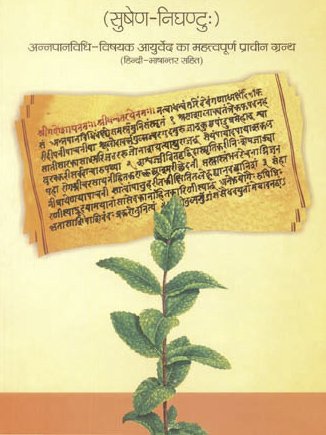Indrayan, Indrāyan: 4 definitions
Introduction:
Indrayan means something in Hinduism, Sanskrit, Hindi, biology. If you want to know the exact meaning, history, etymology or English translation of this term then check out the descriptions on this page. Add your comment or reference to a book if you want to contribute to this summary article.
In Hinduism
Ayurveda (science of life)
Nighantu (Synonyms and Characteristics of Drugs and technical terms)
Source: WorldCat: Rāj nighaṇṭuIndrāyan in the Hindi and Marathi language is another name for Indravāruṇī, a medicinal plant identified with Citrullus colocynthis (colocynth, bitter apple or desert gourd) from the Cucurbitaceae or “gourd family” of flowering plants, according to verse 3.70-72 of the 13th-century Raj Nighantu or Rājanighaṇṭu. The third chapter (guḍūcyādi-varga) of this book contains climbers and creepers (vīrudh). Other than the Hindi and Marathi word Indrāyan, there are more synonyms identified for this plant among which twenty-nine are in Sanskrit.

Āyurveda (आयुर्वेद, ayurveda) is a branch of Indian science dealing with medicine, herbalism, taxology, anatomy, surgery, alchemy and related topics. Traditional practice of Āyurveda in ancient India dates back to at least the first millenium BC. Literature is commonly written in Sanskrit using various poetic metres.
Biology (plants and animals)
Source: Wisdom Library: Local Names of Plants and DrugsIndrayan [ইন্দ্রাযন] in the Bengali language is the name of a plant identified with Citrullus colocynthis (L.) Schrader from the Cucurbitaceae (Pumpkin) family having the following synonyms: Cucumis colocynthis, Colocynthis vulgaris. For the possible medicinal usage of indrayan, you can check this page for potential sources and references, although be aware that any some or none of the side-effects may not be mentioned here, wether they be harmful or beneficial to health.
Indrayan [ইন্দ্ৰায়ণ] in the Assamese language is the name of a plant identified with Trichosanthes tricuspidata Lour. from the Cucurbitaceae (Pumpkin) family having the following synonyms: Trichosanthes palmata, Trichosanthes bracteata, Modecca bracteata.
Source: Google Books: CRC World Dictionary (Regional names)1) Indrayan in India is the name of a plant defined with Citrullus colocynthis in various botanical sources. This page contains potential references in Ayurveda, modern medicine, and other folk traditions or local practices It has the synonym Cucumis colocynthis L. (among others).
2) Indrayan is also identified with Holarrhena pubescens It has the synonym Echites antidysentericus Roth, nom. illeg., non Echites antidysentericus (L.) Roxb. ex Fleming (etc.).
Example references for further research on medicinal uses or toxicity (see latin names for full list):
· Indian Journal of Physiology and Pharmacology (1983)
· Indian Journal of Pharmacy (1977)
· Garcia Orta, Sér. Bot. (1976)
· Phytochemistry
· Anales del Museo Nacional de Montevideo (1910)
· Systema Vegetabilium (1819)
If you are looking for specific details regarding Indrayan, for example chemical composition, diet and recipes, side effects, extract dosage, health benefits, pregnancy safety, have a look at these references.

This sections includes definitions from the five kingdoms of living things: Animals, Plants, Fungi, Protists and Monera. It will include both the official binomial nomenclature (scientific names usually in Latin) as well as regional spellings and variants.
Languages of India and abroad
Hindi dictionary
Source: DDSA: A practical Hindi-English dictionaryIndrayan in Hindi refers in English to:—(nm) a colocynth..—indrayan (इंद्रायन) is alternatively transliterated as Iṃdrāyana.
...
See also (Relevant definitions)
Starts with: Indrayan jad, Indrayan ka guda, Indrayan ki jad, Indrayan phal, Indrayani, Indrayanjad, Indrayanmool, Indrayanphal.
Ends with: Badi indrayan, Badi-indrayan, Kali-indrayan, Lal indrayan, Lal-indrayan, Rata-indrayan.
Full-text: Badi indrayan, Lal indrayan, Indrayan jad, Kali-indrayan, Indrayan ka guda, Indrayan phal, Indrayan ki jad, Imdrayana, Lal-indrayan, Badi-indrayan, Rata-indrayan, Indravaruni.
Relevant text
No search results for Indrayan, Indrāyan; (plurals include: Indrayans, Indrāyans) in any book or story.